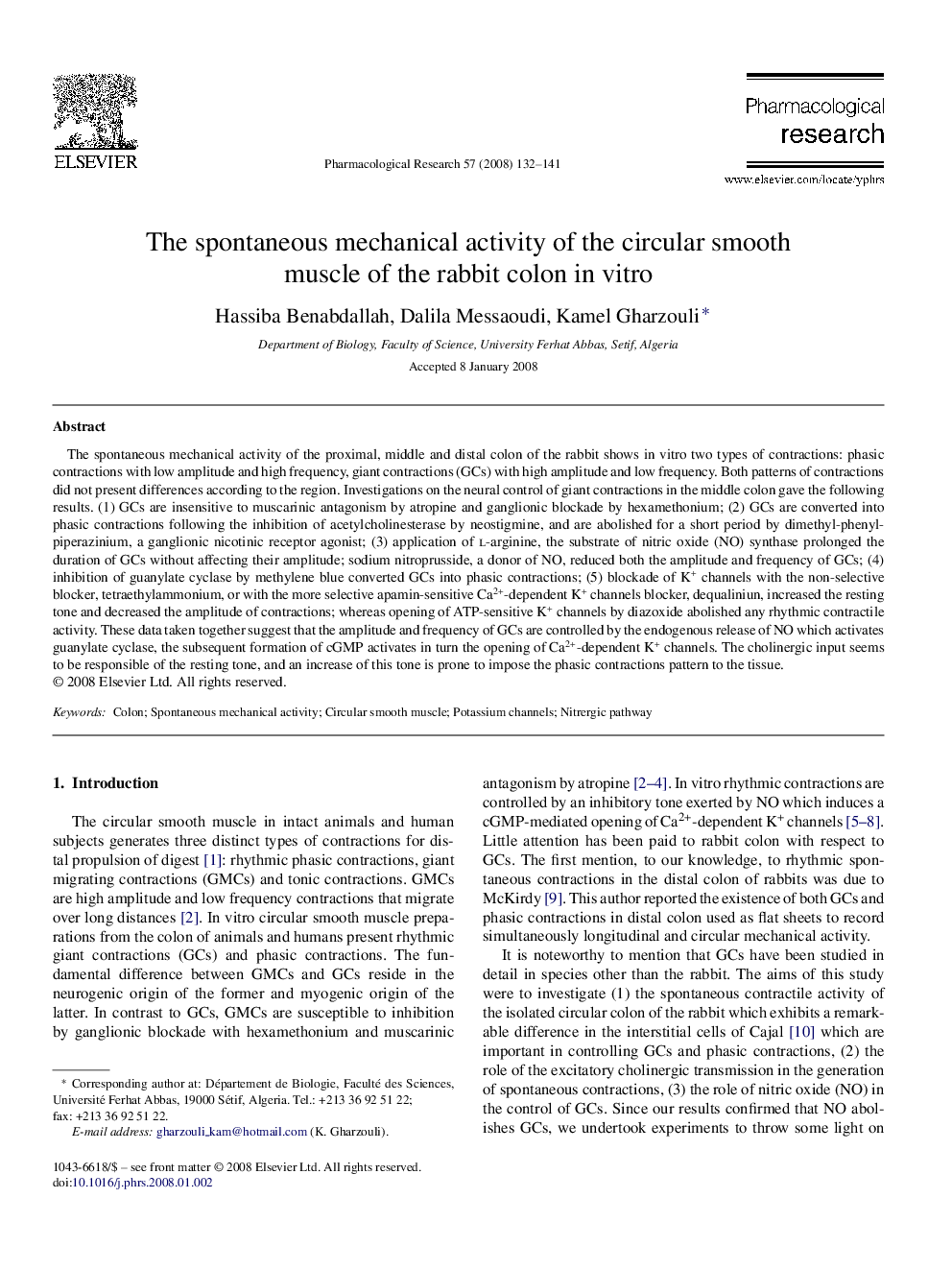| Article ID | Journal | Published Year | Pages | File Type |
|---|---|---|---|---|
| 2562624 | Pharmacological Research | 2008 | 10 Pages |
The spontaneous mechanical activity of the proximal, middle and distal colon of the rabbit shows in vitro two types of contractions: phasic contractions with low amplitude and high frequency, giant contractions (GCs) with high amplitude and low frequency. Both patterns of contractions did not present differences according to the region. Investigations on the neural control of giant contractions in the middle colon gave the following results. (1) GCs are insensitive to muscarinic antagonism by atropine and ganglionic blockade by hexamethonium; (2) GCs are converted into phasic contractions following the inhibition of acetylcholinesterase by neostigmine, and are abolished for a short period by dimethyl-phenyl-piperazinium, a ganglionic nicotinic receptor agonist; (3) application of l-arginine, the substrate of nitric oxide (NO) synthase prolonged the duration of GCs without affecting their amplitude; sodium nitroprusside, a donor of NO, reduced both the amplitude and frequency of GCs; (4) inhibition of guanylate cyclase by methylene blue converted GCs into phasic contractions; (5) blockade of K+ channels with the non-selective blocker, tetraethylammonium, or with the more selective apamin-sensitive Ca2+-dependent K+ channels blocker, dequaliniun, increased the resting tone and decreased the amplitude of contractions; whereas opening of ATP-sensitive K+ channels by diazoxide abolished any rhythmic contractile activity. These data taken together suggest that the amplitude and frequency of GCs are controlled by the endogenous release of NO which activates guanylate cyclase, the subsequent formation of cGMP activates in turn the opening of Ca2+-dependent K+ channels. The cholinergic input seems to be responsible of the resting tone, and an increase of this tone is prone to impose the phasic contractions pattern to the tissue.
